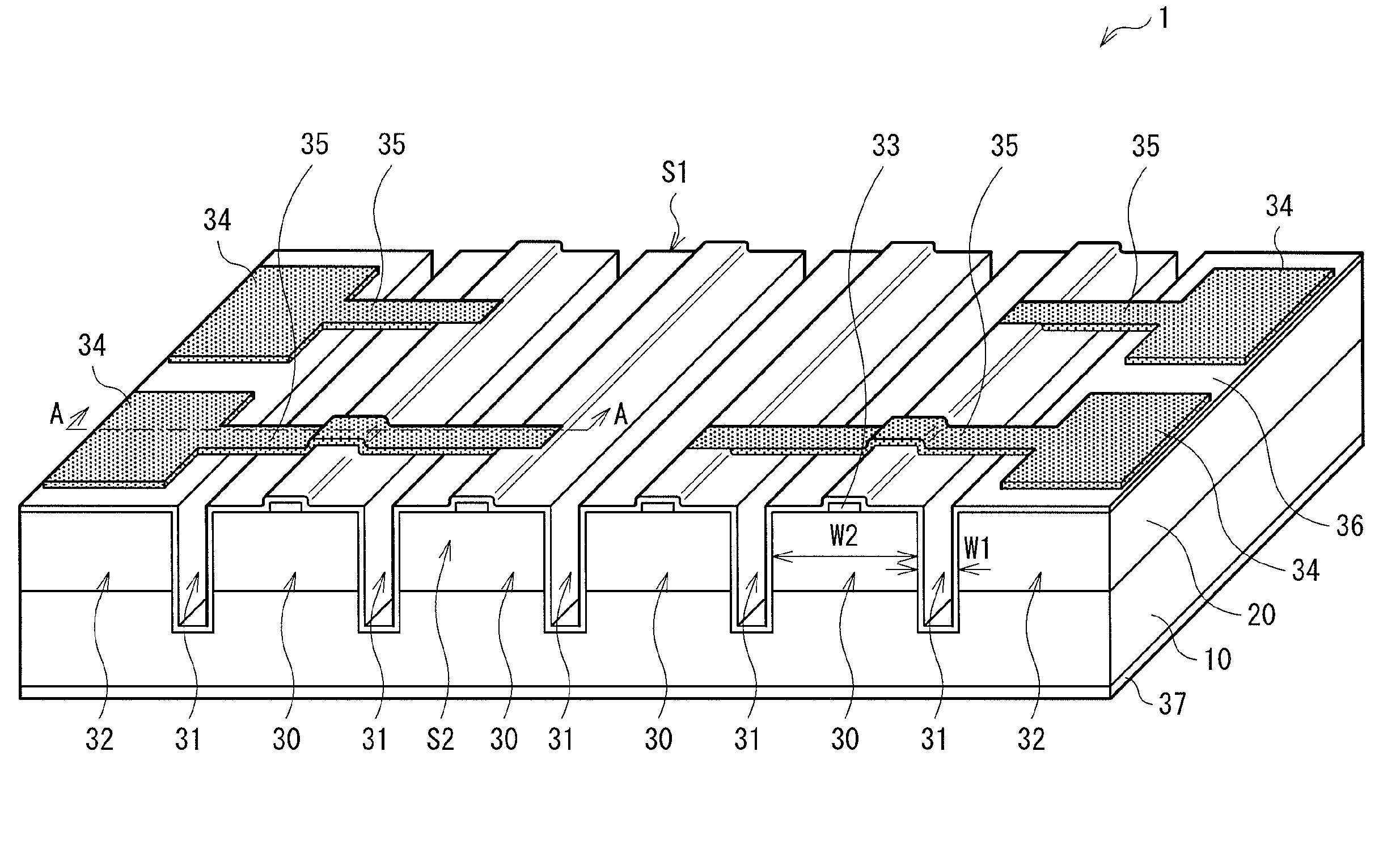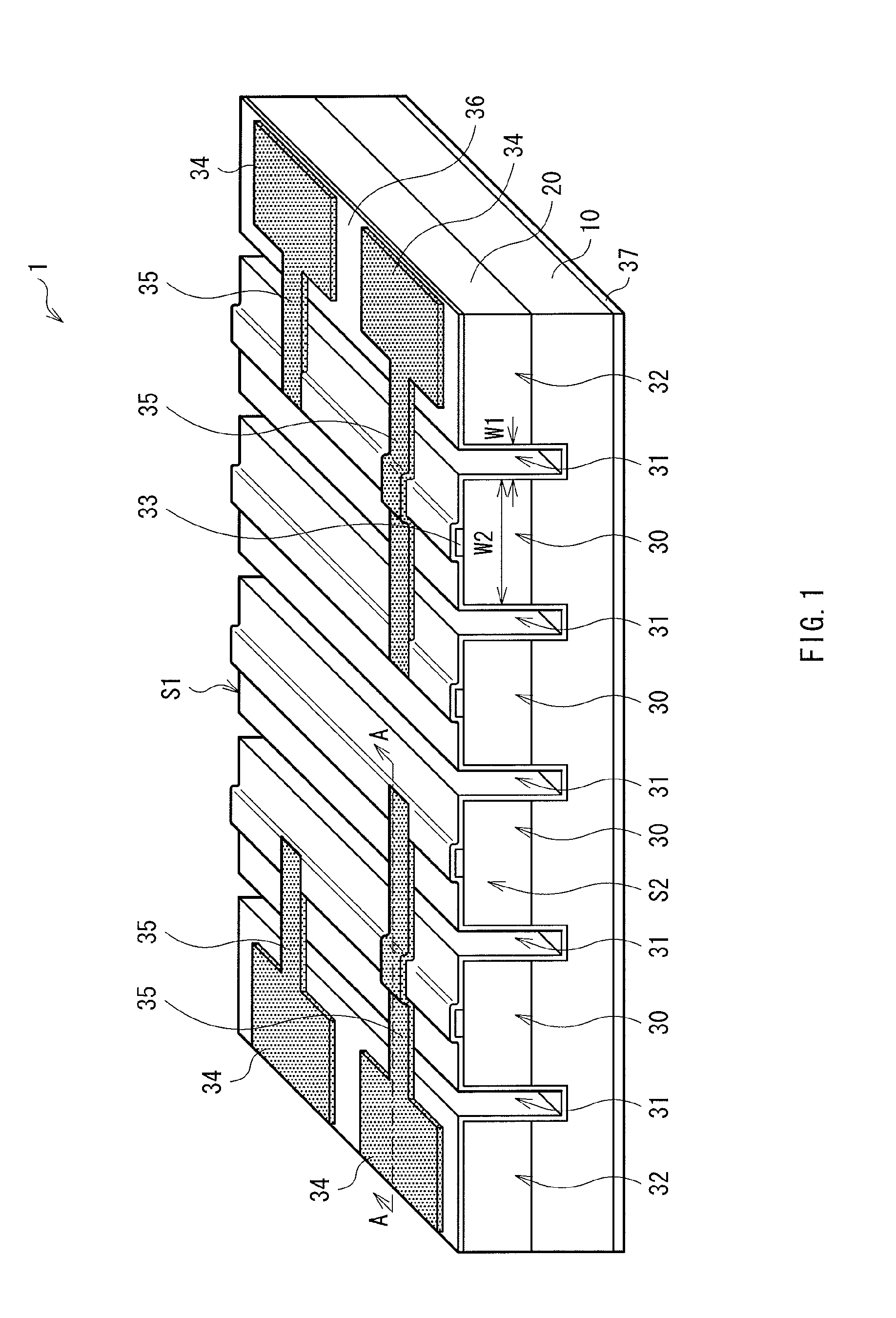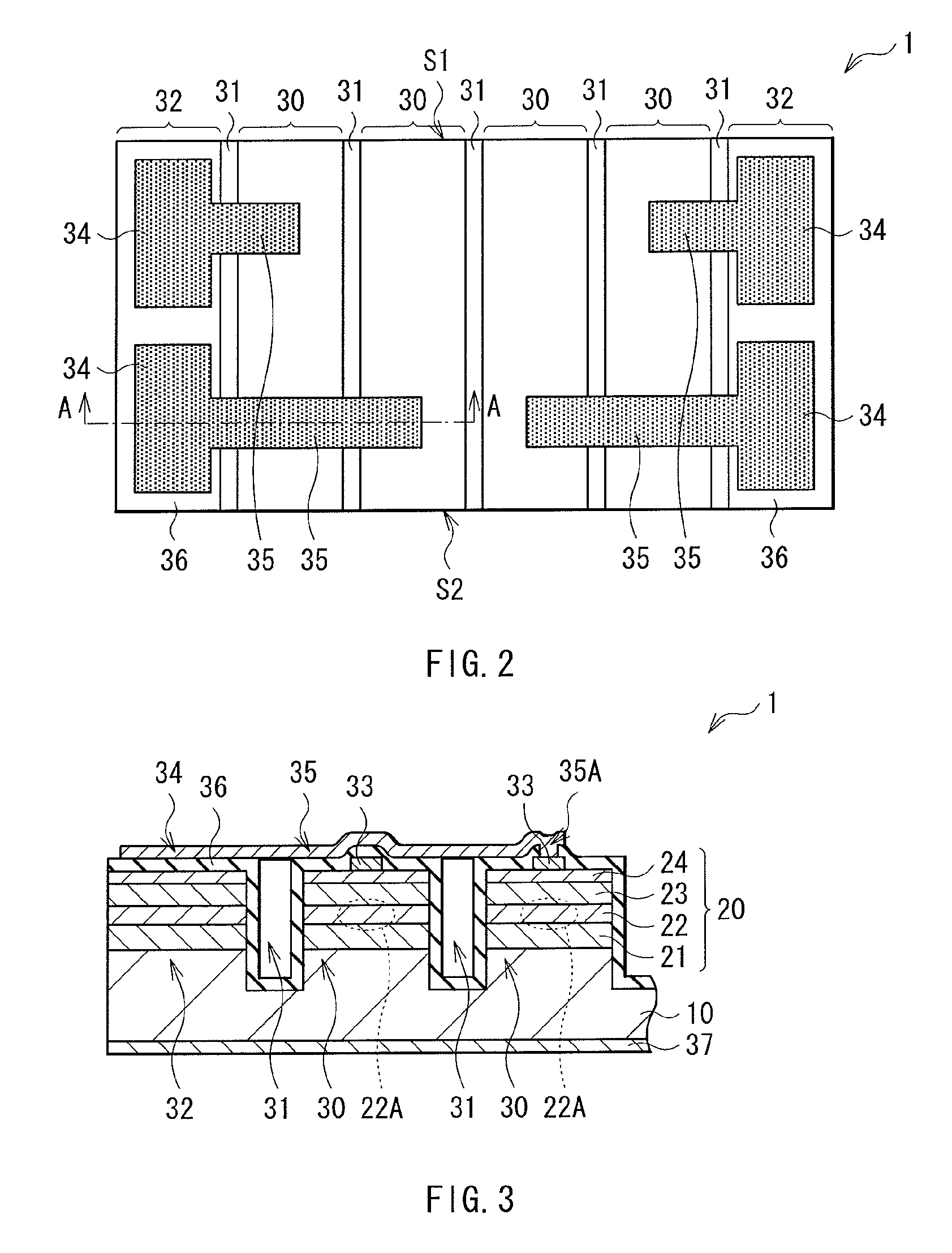Semiconductor laser
a semiconductor laser and laser technology, applied in semiconductor lasers, laser details, electrical equipment, etc., can solve the problems of increasing cost, accumulating strain, and affecting the reliability of the wiring layer, so as to suppress the rotation of the plane of polarization caused by the stress applied on the ridge, the effect of reducing the deterioration of reliability
- Summary
- Abstract
- Description
- Claims
- Application Information
AI Technical Summary
Benefits of technology
Problems solved by technology
Method used
Image
Examples
first embodiment
[0035]FIG. 1 is a perspective view illustrating an example of a schematic configuration of a semiconductor laser 1 according to a first embodiment of the present invention. FIG. 2 illustrates an example of the configuration of a top surface of the semiconductor laser 1 in FIG. 1. FIG. 3 illustrates an example of a sectional configuration taken along line A-A of the semiconductor laser 1 in FIG. 1 or 2. The semiconductor laser 1 of the embodiment is a multi-beam semiconductor laser having a plurality of stripe-shaped emitters and an edge-emitting semiconductor laser for emitting a laser beam from end surfaces of the emitters.
[0036]The semiconductor laser 1 has, for example, a semiconductor layer 20 on a substrate 10. The semiconductor layer 20 includes, for example, as illustrated in FIG. 3, a lower cladding layer 21, an active layer 22, an upper cladding layer 23, and a contact layer 24 in order from the substrate 10 side. Although not illustrated, the semiconductor layer 20 may be ...
second embodiment
Modification of Second Embodiment
[0069]In the second embodiment, a portion disposed in the air in the wiring layer 35 has an arch shape which projects toward the side opposite to the bottom surface of the trench 31. For example, although not illustrated, the portion may have a flat shape or a concave shape which dents toward the trench side. Also in the case where the wiring layer 35 has such a shape, accumulation of strains in the Au layer 35C is suppressed, and the possibility that the wiring layer 35 is broken is reduced.
example
[0070]Next, an example of the semiconductor lasers 1 and 2 according to the foregoing embodiments will be described in contrast with a comparative example. As an example of the semiconductor laser 1, the portion disposed in the air in the wiring layer 35 was formed in a flat shape, and a Ti layer, a Pt layer, and an Au layer were stacked in this order on the top surface side of the ridge 30. As an example of the semiconductor laser 2, the portion disposed in the air in the wiring layer 35 was formed in an arch shape which projects toward the side opposite to the bottom surface of the trench 31, and the adhesion layer 35B obtained by stacking a Ti layer and a Pt layer in this order from the trench 31 side, the Au layer 35C, and the strain suppression layer 35D made of Ti or Ni were stacked in this order from the trench 31 side. In a comparative example, the portion disposed in the air in the wiring layer 35 was formed in an arch shape which projects toward the side opposite to the bo...
PUM
 Login to View More
Login to View More Abstract
Description
Claims
Application Information
 Login to View More
Login to View More - R&D
- Intellectual Property
- Life Sciences
- Materials
- Tech Scout
- Unparalleled Data Quality
- Higher Quality Content
- 60% Fewer Hallucinations
Browse by: Latest US Patents, China's latest patents, Technical Efficacy Thesaurus, Application Domain, Technology Topic, Popular Technical Reports.
© 2025 PatSnap. All rights reserved.Legal|Privacy policy|Modern Slavery Act Transparency Statement|Sitemap|About US| Contact US: help@patsnap.com



